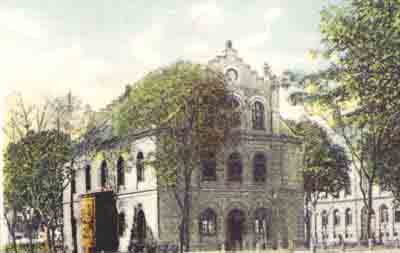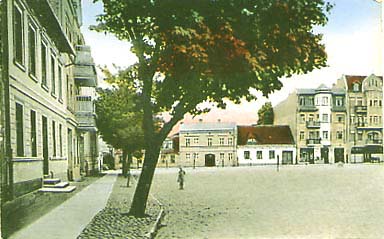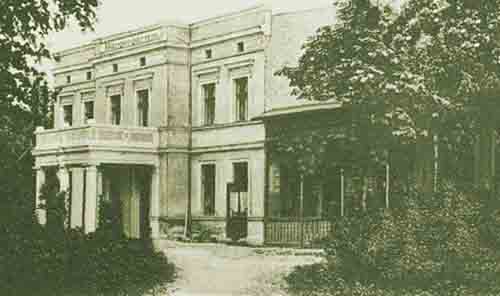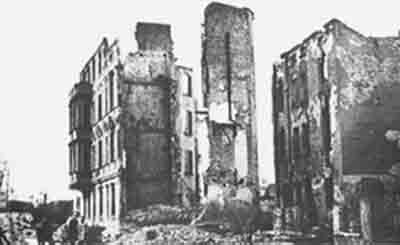.
Memories
of Schneidemühl
Very little of the original architecture of the
19th and early 20th century remained in Schneidemühl
after the end of the
Second World War. Additionally, successive post-war
Communist city councils
had little regard for sentiments, as new blocks of Stalinist-style concrete buildings made room
for a relocated population in the reborn city of Piła. The result of the rebuilding process,
possibly mixed with the wish to eradicate the German past of the city,
was the elimination of several streets and some of the remaining
old buildings.
An eclectic
choice of old photographs

(Photo courtesy J. Rosenberg, Chile)
A
south-west view of the synagogue,
before the
enlargement of
the west entrance,
— summer 1890, as
seen from across the Wilhelms-Platz.

(Photo courtesy J. Rosenberg, Chile)
Hindenburg
Platz, originally
known as Alter
Markt,
ca. 1930.
This used to be the centre of
the old town of Piła in the 16th century.
 (Photo courtesy J.
Rosenberg, Chile)
(Photo courtesy J.
Rosenberg, Chile)
The
Bürgergarten, once known as "Straubel's Tivoli," formerly a favorite
weekend restaurant for the populace.
On 21 February 1940 this
building was taken over by the Gestapo and became
one of the many detention centres of the Jews of Schneidemühl and the
surrounding areas who had been arrested on that day.
Many of the elderly perished in this locale, while the rest
were eventually deported
from here to
labor camps, hospices and ultimately, in 1941-43, to the
death camps.

(Photo courtesy J. Rosenberg, Chile)
Schneidemühl, February 1945:
t
he Soviet Red
Army, fighting street by street
.

.
(Photo courtesy J. Rosenberg, Chile)
14 February 1945 — German capitulation.
One of the countless ruins —
all
that remained of the once fashionable Friedrichstrasse
Back to
top
Copyright
©
2006-2019 Peter Simonstein Cullman




